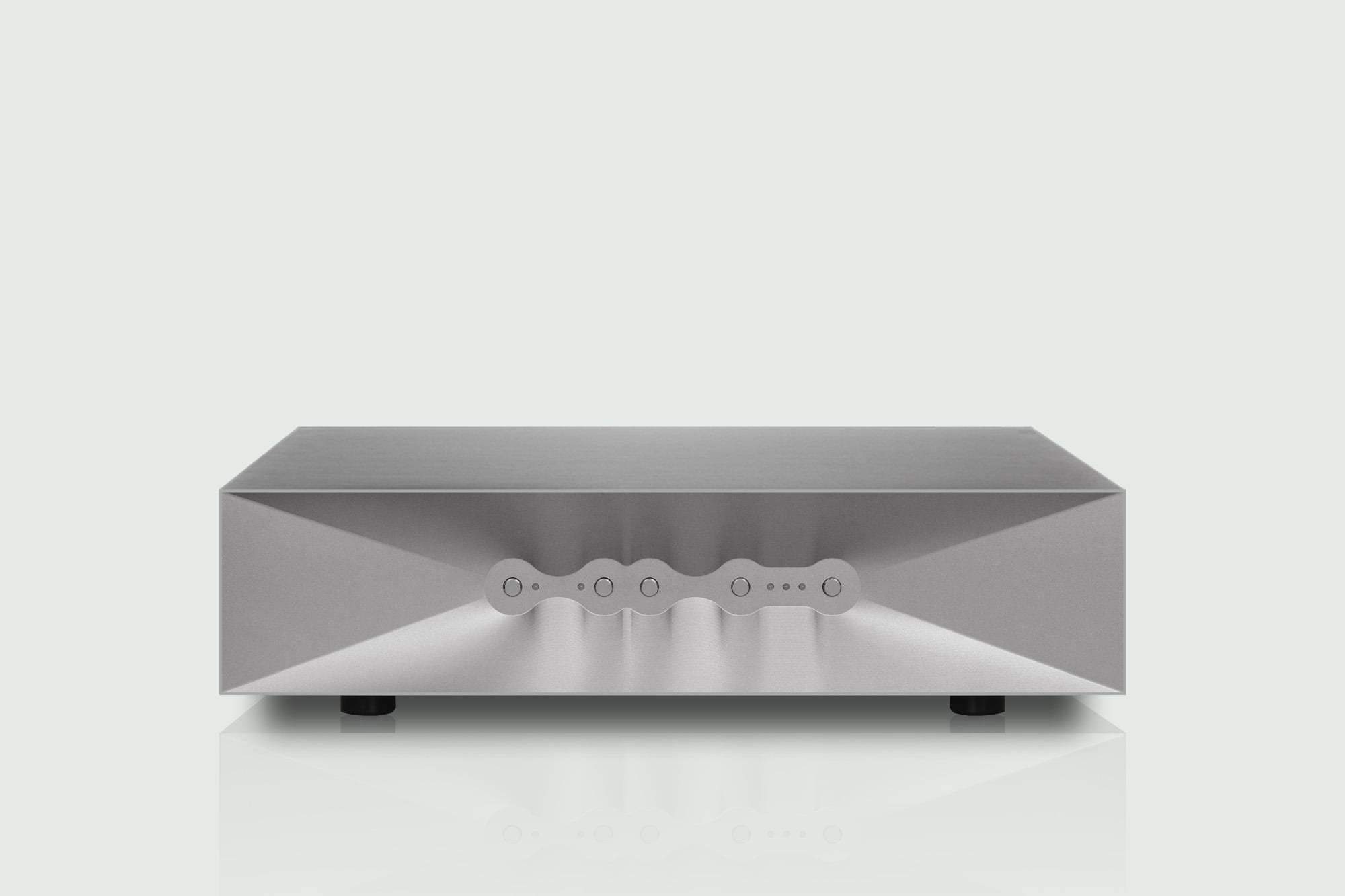Orpheus is a modern masterpiece that uses only two vacuum tube gain stages with zero feedback and a passive LCR equalizer between them. Moving coil sources are handled by a built in step-up transformer taking advantage of its balanced differential nature , unless the grounding option is engaged on the RCA inputs referencing all to the system ground. As we switch the ground plane when switching inputs there are no hum loops or induced ground noise even with multiple turntables. The input stage is a super low noise D3a German Post tube. Loaded by a constant current cascode it provides the necessary gain and output impedance to feed the custom built passive LCR RIAA correction following it.
Equalization is realized through the use of constant impedance LCR filters using coils wound with OCC wire and copper foil capacitors. This way the input stage sees a constant load (resistor) at all levels and frequencies, making its behavior predictable at any signal level. The power supply of Orpheus uses a choke input full wave tube rectifier arrangement. This eliminates switching noise and any other disturbance that comes before the choke. The other benefit of this topology is that the choke keeps the voltage on the capacitor bank constant. All this is governed by a microprocessor switching the appropriate combination of relays and monitoring the unit’s status and incoming commands.
The switchable input transformer interfaces to MC cartridges and has selectable gain and loading impedance, while MM cartridges connect directly with the grid of the input tube. The equalization is passive and of the constant impedance type. The next stage is another super low-noise tube loaded by a transformer to bring the signal up to the necessary level and provide complete isolation of this sensitive circuit from the following components. The filter is out of any gain loops and sits between the two gain stages protected from any unpredictable influences.
The chassis is milled in-house from solid plates of different thickness aluminium that are interlocked together to form a ring like structure. We have the power supply mounted on the left sidewall of this structure and the signal transformers on the right side. Two semi-flexible bars on which the motherboard and its heat sink are attached, which then support this ring. The top and bottom plates link all sides of the ring with the flexible bars and the feet, made from machined plastic on flexible screws to prevent scratching and allow for use on uneven surfaces. There are no screws visible anywhere on the chassis. And the chassis feels like a solid block.













CONNECT WITH US